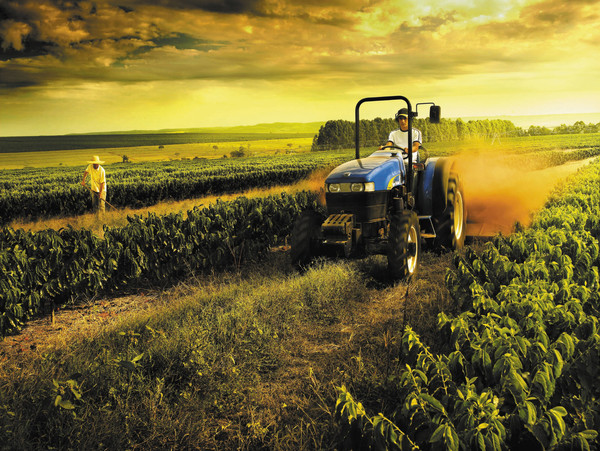
Agricultural machinery: Indian market at an all-time high
In 2023 tractor sales will again exceed the 900,000 mark and set a new record. The Mahindra brand leads the market, however, Italian manufacturers have an established presence in both the tractor and equipment segments
Are 915,474 number of tractors registered in India last year. A historic figure that consolidates the 900 thousand machines sold in 2021 and 2022 (five years ago it was around 700 thousand) and confirms the subcontinent at the top of the special global ranking. In fact, considering that around 2.5 million tractors are registered worldwide, India absorbs 36% of the entire market in numerical terms, almost five times the entire registered market of Western Europe, and more than three times the sales of the States. Of course, if we think in terms of value and power, the panorama changes: Indian tractors are considerably smaller, with more basic technology and suitable for average areas of just a few hectares. But the boom remains and is indicative of a substantially irreversible path of mechanisation. Put under observation by all the world's manufacturers, whether large or small. On the other hand, a gross surface area of over 200 million hectares, 140 of which are sown and more than half irrigated, cannot leave anyone indifferent. A patrimony of agricultural land capable of 'withstanding' and putting in its sights the astounding figure of one million tractors sold over a twelve-month period.
Tractors, the players in the Indian market. Benefiting from this boom is above all the Indian manufacturer Mahindra, the largest manufacturer in the world in terms of volume, since more than 150,000 machines leave the Tractor line's production facilities every year. Mahindra, which is therefore the undisputed market leader, is flanked by a plethora of other smaller brands, as well as brands that are also well known outside India, such as Escorts, Farmer, Sonalika, Tafe (the second national player). These are joined by the big global brands, John Deere and New Holland, and several Italian players. The Sdf group has led the way and has been in Ranipet since the turn of the last century. Bcs landed in India in 2004 and celebrates 20 years of presence in the Punjab in 2024. Argo Tractors signed the agreement with Itl - International Tractors Limited in 2018, which opened the path of internationalisation for the Fabbrico-based group.
Equipment and components speak Italian. If the tractor is the key machine in the sector, even more interesting prospects for the development of the Indian agricultural sector are opening up for the world of equipment and components. And here too there is no shortage of Italian manufacturers, some with more than consolidated experience. Maschio Gaspardo has been in Pune in Maharashtra since 2011 and has consolidated over time a sales network of several hundred dealers. Carraro, with transmissions, gearboxes and axles, has three Indian branches, all in the Pune area. Bonfiglioli (gearboxes and transmissions) has moved in the same direction: three plants between Chennai (two) and Pune (the third). Also in the agro-mechanical field are Safim Brakes for braking systems, Mita which has been in Uttar Pradesh with its three-point linkages since 1999, and Ognibene (hydraulic systems) in Pune since 2006. Also strongly internationalised are the components of the Ama group, which has landed in India with a plant in Ludhiana in the Punjab.
In addition to these relevant companies, many other manufacturers have production agreements and business contacts in the Indian market, which has become a major target for development. In fact, the subcontinent has long been home to major brands in the industry such as, 76 Industrial Graphic, ADR, Biondioli & Pavesi, Braglia, CBM, Kohler e Walvoil.
The mechanisation needs of the subcontinent. Overall, the mechanisation process in Indian agriculture requires equipment in every segment: from irrigation systems to the distribution of technical means, from tillage to sowing and harvesting, not to mention the growing interest in modernising livestock breeding and, although in its infancy in basic agriculture, in precision systems. The result is a growing trade interchange that reached a peak in 2022 when Italian imports of tractors and agricultural machinery from India reached a record value of 113 million euros and exports of tractors and agricultural machinery also improved on the historical record, reaching 43 million euros. The latest Istat data, processed by FederUnacoma, for the first ten months of 2023 show a slight slowdown. The value of January-October exports stopped just under 25 million euros, while the value of imports in the same period was 80 million euros. The underlying climate on trade relations and the supply of specialised agricultural machinery remains positive, however, also driven by the possible growth of the fruit and vegetable sector in which Italian mechanisation, which is highly specialised, can carve out important spaces. The conclusion is with a figure that can provide a summary of the whole picture: the Indian agricultural equipment market, stimulated by government policies and bank financing support, is expected to exceed 15 billion euro in value by 2025. In 2020, it was worth around 11 billion euro.








